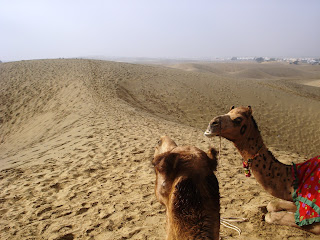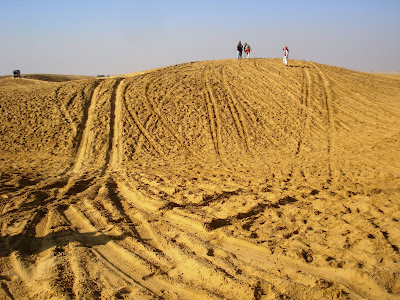Let me admit first: I am not a die-hard fan of putt-putting
bikes; they are noisy, and they are a nuisance on the roads, especially in a
city like Ahmedabad, a threat to all vehicle owners as well as pedestrians.
However, I also admit to the legendary status of Royal
Enfield, having imbibed the knowledge while growing up along with the legend,
in the British East Africa; the fact remains that for some in regions such as Goa,
and Pondicherry in India, a bike is a source of livelihood, a cheap means of
transport.
It was with this background that the family landed at a spa on
Baga creek at Alpora, Goa in the second week of June 2019; we were all in a
terrific holiday mood, academics being the last thing on our collective mind.
But a mild shock awaited us, a lightning stroke of good
fortune no doubt!!
I never even had slightest inkling that of all the things,
there will be a museum of Royal Enfield bikes, tucked away in the hot,
lazy but quietly breezy neigbourhood on the Baga river, just a loitering
distance from where we stayed! It was waiting to be explored with exhibits from
its humble beginnings to modern bikes, from the World War series to the naked
engines on the show, all so well curated by Royal Enfield, India.
Let me introduce you
to the place first.
 The Royal Enfield Garage Café Goa is a truly authentic, one-of its-kind
experience that is centered around everything in motorcycling – a celebration
of exploration through food, beverage, music, entertainment, and personal expression.
It is an iconic destination and the spiritual home of Royal Enfield. Garage
Café Goa is an inviting and intriguing space that is open to riders,
non-riders, travelers & explorers, and families where they can experience a
café and bar, an exclusive apparel and accessories store and ride out with a
rented motorcycle from a well maintained fleet. And of course, the museum
itself.
The Royal Enfield Garage Café Goa is a truly authentic, one-of its-kind
experience that is centered around everything in motorcycling – a celebration
of exploration through food, beverage, music, entertainment, and personal expression.
It is an iconic destination and the spiritual home of Royal Enfield. Garage
Café Goa is an inviting and intriguing space that is open to riders,
non-riders, travelers & explorers, and families where they can experience a
café and bar, an exclusive apparel and accessories store and ride out with a
rented motorcycle from a well maintained fleet. And of course, the museum
itself.
The Royal Enfield Garage Cafe has the following 4 business
verticals:
1.
Cafe
(restaurant & bar)
2.
Showroom
(sale of motorcycles, apparel, genuine motorcycle accessories)
3.
Service
(7 bays, complete team of qualified and trained supervisors and technicians)
4.
Rentals
(a fleet of well maintained RE motorcycles for rent)
Apart from that, the main pillars that the Royal Enfield
Garage Cafe centers its events and promotions around are:
- Food & Drinks
- Live Music Performances (every
week, through the year)
- Motorcycle Workshops (1st
Sunday every month)
- Sunday Ride (Community Bike
Ride - 2nd Sunday every month)
- Full Throttle (Biker related
talks / events - 3rd Sunday every month)
- Garage Cafe Sunday Stories
(Generic Talk Show - 4th Sunday every month)
- Bike Rentals
- Art of Motorcycling / Exhibits
/ Museum
- Custom Motorcycles on display
Hopingly, the pictorial gallery below creates the lazy atmosphere in the Cafe even as it expresses the awe that the models inspires - the old bikes, the engine exposed, the bike that used to be parachuted during the world war, sitting by one for a drink and food, the night band and the screen on which we saw the India-Pakistan world cup match.
Acknowledgement: The author wishes to thank Mr. Vaibhav Nijhowne, Manager - Customer Experience, Royal Enfield Garage Café, Goa for his support and for the information shared gladly.
- Pics by Yashesh Anantani






































































